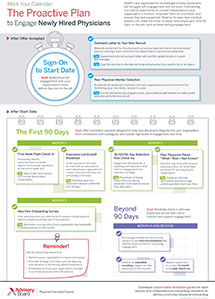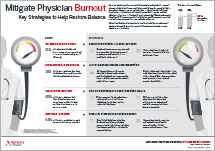By Ashley Fuoco Antonelli, Contributing Editor
There's an ongoing debate in the U.S. health care community over physician shortages and access to care. Some experts argue the U.S. health system has too few doctors to treat aging baby boomers, while others say the real problem is that U.S. doctors are too inefficient.
Learn the 4 requirements for successful physician recruitment in today’s competitive market
Reports say US is facing a worsening physician shortage
The Association of American Medical Colleges (AAMC) each year puts out a report on physician supply, and the report for the past several years has warned that the United States is experiencing a worsening physician shortage. AAMC in its latest report predicted that the country could see a shortage of as many as 122,000 physicians by 2032 as demand for physicians outpaces supply.
Darrell Kirch, the group's president and CEO, in a release explained, "The nation's population is growing and aging, and as we continue to address population health goals like reducing obesity and tobacco use, more Americans will live longer lives. These factors and others mean we will need more doctors." Kirch added, "Even with new ways of delivering care, America's doctor shortage continues to remain real and significant."
And those predictions certainly are drawn from real evidence. Research has shown that baby boomers are demanding more care as they age. Further, studies suggest that both baby boomers and millennials are in worse health than previous generations, which could mean they'll need comparatively more health care services.
But experts question whether that's the whole story
However, some research suggests that United States isn't actually facing a physician shortage, and the inefficiency in the health care system is to blame for straining access to care.
During a discussion last year, Ezekiel Emanuel, chair of the Department of Medical Ethics and Health Policy at the University of Pennsylvania, told Medscape Editor-in-Chief Eric Topol, "If you look through history, everyone is always predicting that we will have this terrible physician shortage. Yes, there are lots of problems: delays in getting an appointment and spot shortages in certain specialties, especially some pediatric subspecialties." However, he continued, "[I]f you look at the issue of primary care doctors, I think the notion of a shortage is greatly exaggerated."
Emanuel's reasoning is based on research he and other researchers conducted for a 2017 JAMA viewpoint. They calculated the number of physicians needed to care for the U.S. population, and estimated that the number of full-time primary care physicians at the time, which was slightly more than 388,000, could care for approximately 583 million people if they each had the Agency for Healthcare Research and Quality's recommended patient panel size of between 1,500 and 2,000 patients. The researchers noted that, at the time, the U.S. population was 240 million, meaning the United States needed just 160,000 primary care physicians with patient panel sizes of 1,500 to care for the population. As such, the U.S. actually had a potential surplus of primary care providers.
What is driving the physician-shortage mentality?
So if the United States doesn't actually have a physician shortage, why do patients struggle to access care?
While Emanuel has suggested the providers "are just bad at managing time," Aaron Carroll, a professor of pediatrics at Indiana University School of Medicine who similarly has argued against the physician-shortage mentality, has offered two other potential factors. Carroll in a 2016 blog post for the New York Times' "The Upshot" wrote that although many U.S. residents face a shortage of health care services, the problem does not stem from a lack of physicians so much as from the inefficient use and uneven distribution of resources.
While Carroll acknowledged some areas of the country have physician shortages, he noted that others have surpluses. He argued that Medicare exacerbates the issue by paying physicians more to live in places where they might be inclined to live anyway.
The issue also is exacerbated by physician specialization, Carroll contended, noting that data showed the United States came in 24th out of 28 countries when ranking the number of generalists per 1,000 residents, but came in 11th when it came to specialists in 2016. Carroll wrote that salaries could be part of the problem, as medical students, particularly those facing large amounts of student debt, might be attracted to specialists' higher salaries.
What's the fix?
The latest AAMC report suggests the debate will continue. But in the meantime, experts say there are steps state and public health officials can take to even the distribution of health care services, from embracing new technologies such as telemedicine, to expanding non-physician providers' scope of practice, to adjusting physician reimbursement policies so they encourage providers to practice in shortage-prone areas.
Win the war for physician talent
Physician recruitment is not a new problem. But generational changes and rising expectations for physician performance make competition for physician talent feel increasingly intense today.
Though recruitment challenges are deep-rooted, organizations can take steps to ensure their physician recruiting process is as effective as possible. Read the report to learn the four requirements for successful recruitment in today’s competitive market.
Don't miss out on the latest Advisory Board insights
Create your free account to access 2 resources each month, including the latest research and webinars.
Want access without creating an account?
You have 2 free members-only resources remaining this month remaining this month.
1 free members-only resources remaining this month
1 free members-only resources remaining this month
You've reached your limit of free monthly insights
Become a member to access all of Advisory Board's resources, events, and experts
Never miss out on the latest innovative health care content tailored to you.
Benefits include:
You've reached your limit of free monthly insights




